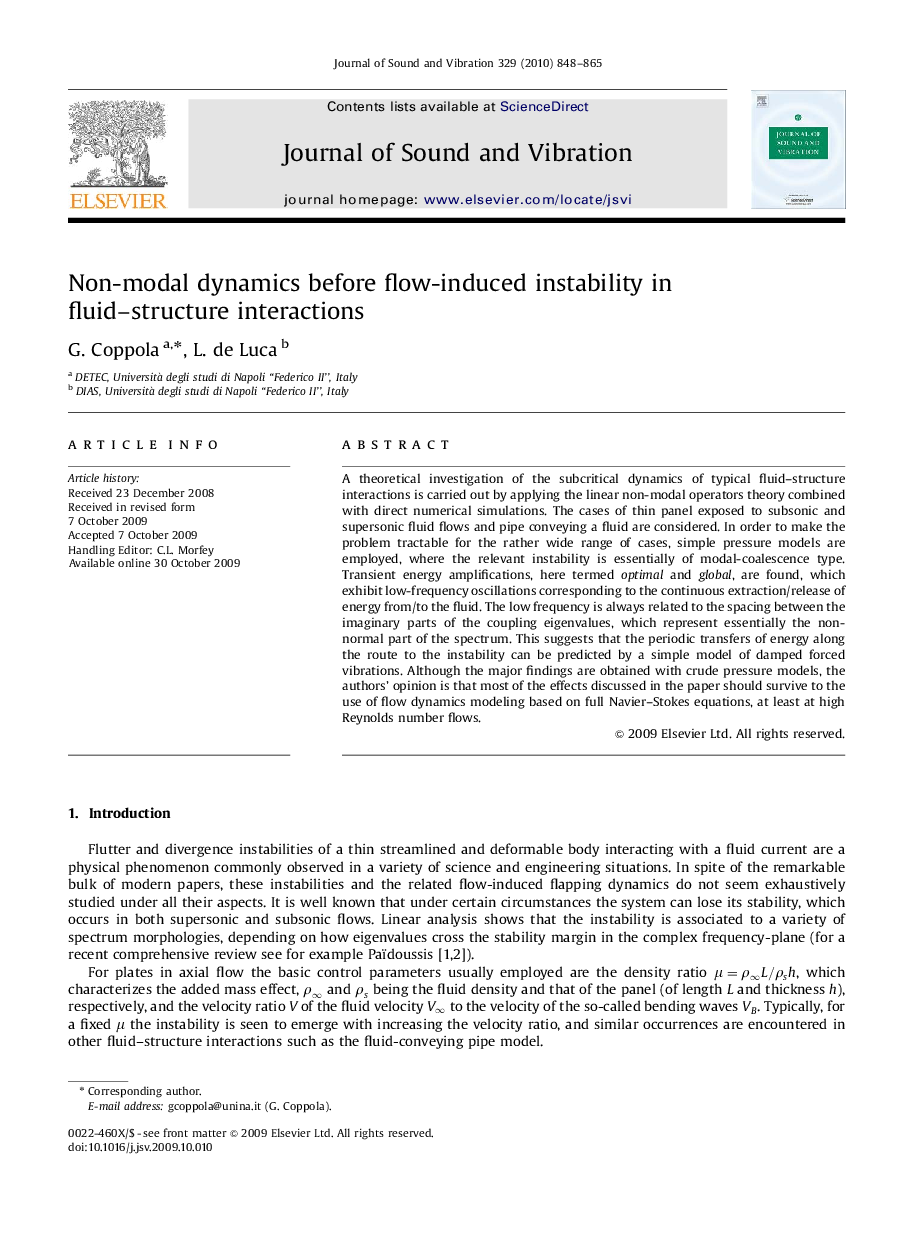| کد مقاله | کد نشریه | سال انتشار | مقاله انگلیسی | نسخه تمام متن |
|---|---|---|---|---|
| 289787 | 509698 | 2010 | 18 صفحه PDF | دانلود رایگان |

A theoretical investigation of the subcritical dynamics of typical fluid–structure interactions is carried out by applying the linear non-modal operators theory combined with direct numerical simulations. The cases of thin panel exposed to subsonic and supersonic fluid flows and pipe conveying a fluid are considered. In order to make the problem tractable for the rather wide range of cases, simple pressure models are employed, where the relevant instability is essentially of modal-coalescence type. Transient energy amplifications, here termed optimal and global, are found, which exhibit low-frequency oscillations corresponding to the continuous extraction/release of energy from/to the fluid. The low frequency is always related to the spacing between the imaginary parts of the coupling eigenvalues, which represent essentially the non-normal part of the spectrum. This suggests that the periodic transfers of energy along the route to the instability can be predicted by a simple model of damped forced vibrations. Although the major findings are obtained with crude pressure models, the authors’ opinion is that most of the effects discussed in the paper should survive to the use of flow dynamics modeling based on full Navier–Stokes equations, at least at high Reynolds number flows.
Journal: Journal of Sound and Vibration - Volume 329, Issue 7, 29 March 2010, Pages 848–865